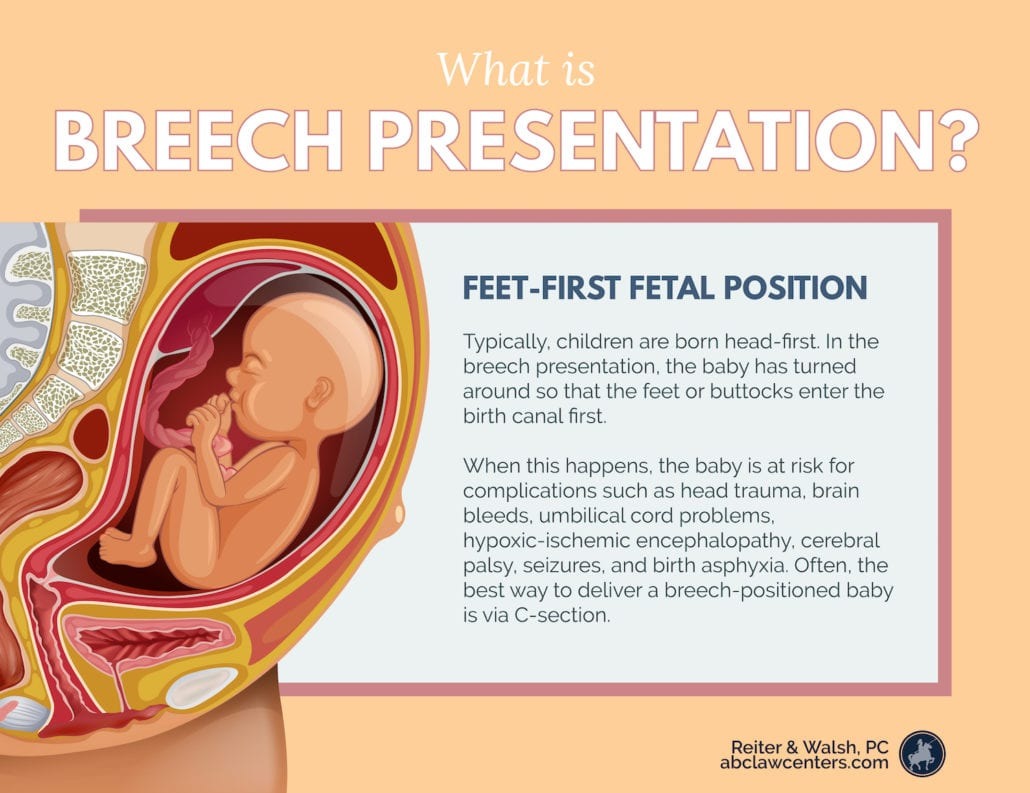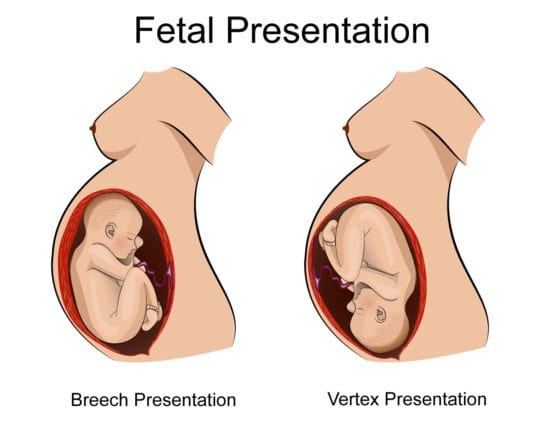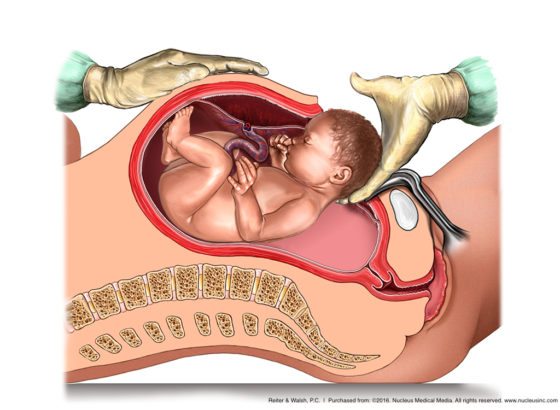Delivering Breech Babies by C-Section
Bringing a new life into the world is a profound and hopeful journey. When a breech delivery leads to a birth injury, that joy can quickly turn to heartache and uncertainty. In many cases, delivering breech babies by C-section is the safer choice, significantly reducing the risk of complications and injuries.
If your child was born breech and suffered a birth injury due to potential medical negligence, you may have grounds to take legal action. Pursuing a civil claim is not just about seeking compensation—it’s about ensuring your child receives the vital resources and support they need to thrive.
Contact ABC Law Centers today for a free, compassionate consultation to discuss how you can secure the future your child deserves.
Research Suggests It Is Safer to Deliver Breech Babies by C-Section
When a baby is in a breech presentation, a vaginal delivery is more likely to result in injury and death than a Cesarean section delivery. A C-section birth is generally considered the safer delivery option to reduce the risk of birth trauma and birth injuries, like hypoxic-ischemic encephalopathy (HIE). HIE is a type of brain injury that happens when a baby’s brain doesn’t get enough oxygen or blood flow.
Failure to recommend or perform an emergency C-section in these cases may constitute medical negligence. This situation can lead to severe consequences for the newborn and legal ramifications for healthcare providers.

What is breech presentation?
A breech presentation occurs when the baby’s legs or buttocks are positioned to descend the birth canal first. There are four different breech positions.
- Frank breech: This is when the baby’s buttocks present first, and her legs are flexed at the hip and extended at the knees, with the feet near the ears.
- Complete breech: In this position, the baby’s hips and knees are flexed so that the baby is sitting cross-legged, with feet beside the buttocks.
- Footling breech: In footling position, one or both feet come first, with the buttocks at a higher position than the feet.
- Kneeling breech: This is when the baby has one or both legs extended at the hips and flexed at the knees.

Delivery for a breech position baby
When a baby is in a breech position, labor can be prolonged because physicians usually try to maneuver the baby into the normal, head-first position manually. Doctors do this by pushing the baby into place from outside the mother’s abdomen. Prolonged labor puts a baby at risk of suffering oxygen deprivation and hypoxic-ischemic encephalopathy.
If the doctor cannot maneuver the baby into a head-first position, vaginal delivery should only be attempted if the baby is in the frank breech position and the following conditions are met:
- The baby’s heart rate is being closely monitored, and the baby is not in distress.
- Cephalopelvic disproportion (CPD) is not present. This means X-rays and ultrasound show that the size of the mother’s pelvis will allow a safe vaginal birth.
- The hospital is equipped for, and the physician is skilled in performing an emergency C-section.
If these conditions are not present, vaginal birth should not be attempted. In fact, most experts recommend C-section delivery when the baby is in breech presentation because it is the safest method of delivery, and it helps avoid birth injuries.

Breech Presentation And Birth Injuries
Birth injuries from mismanaged breech presentation can cause trauma, brain bleeds, oxygen deprivation, HIE, seizures, and cerebral palsy.
Complications that often occur when a baby is in breech position include the following:
Umbilical Cord Prolapse or Compression
Umbilical cord prolapse or compression is an emergency situation that occurs when the baby’s umbilical cord becomes compressed as the baby’s body descends through the birth canal. This can partially or completely cut off the supply of oxygen-rich blood going to the baby. A baby with a compressed cord must be delivered immediately to prevent oxygen deprivation and brain injury.
Nuchal Cord
Nuchal cord is when the cord is wrapped around the baby’s neck. This complication is a medical emergency because the knots that occur with this condition can partially or completely stop the flow of blood from the umbilical cord to the baby. In addition, the cord can put so much pressure on the baby’s neck that blood flow to the baby’s brain is significantly decreased. This lack of oxygen to the brain puts the baby at significant risk of HIE and permanent brain injury.
Fetal distress
Sometimes, the forces and pressure of difficult labor cause the baby to be deprived of oxygen and in distress. When fetal distress occurs, the baby must be delivered immediately by C-section in order to prevent conditions such as HIE and cerebral palsy.
Traumatic Injury
Injury to the brain or skull may occur during the passage of the baby’s head through the birth canal, or the spine or spinal cord may become injured due to improper positioning of the baby by the physician. Furthermore, attempts to position the baby can damage internal organs, or the brain may bleed, which can cause oxygen deprivation.
The head may also get caught in the birth canal, and this can cause brain bleeds and hemorrhages. All of these conditions can cause HIE and cerebral palsy.
Forceps Injury
Rarely, forceps are used to assist in delivering the baby’s head. Many injuries are associated with this risky delivery instrument, which resembles a pair of salad tongs. Improper placement of the forceps can cause compression of the head, spinal cord injury, tearing of the vasculature in the brain, and brain bleeds and hemorrhages. The brain can swell, which can lead to seizures and ischemia. All of these conditions can deprive the brain of oxygen and cause HIE and cerebral palsy.
Dealing with a birth injury diagnosis is difficult, but our attorneys can help.
Causes of breech presentation
Although the causes of breech presentations are not fully understood, there are predisposing factors that appear to make breech presentation more likely. These include:
- Premature births or a history of premature delivery
- Previous breech presentation
- Multiples pregnancy (twins, triplets, etc.)
- Too much amniotic fluid (polyhydramnios) or too little amniotic fluid (oligohydramnios)
- Uterine anomalies such as an unusual shape or fibroids
- Placenta previa (the placenta grows in the lowest part of the uterus and covers all or part of the opening to the cervix)
- Small pelvis or uterus
- Fetal abnormalities
Medical Malpractice in Breech Deliveries: Vaginal Birth vs. C-Section
When a baby is in a breech position, the decision between vaginal delivery and C-section becomes critical. While skilled physicians can sometimes safely deliver breech babies vaginally, generally, C-sections are safer for breech presentations. Choosing vaginal delivery in these cases, or delaying a C-section, can potentially lead to medical malpractice if a birth injury occurs.
Potential Grounds for Malpractice
Some common scenarios where medical malpractice may be present, providing a basis for a legal claim include:
- Failure to diagnose breech position: If a doctor fails to identify a breech presentation before labor begins, they may be unprepared for the associated risks.
- Inappropriate choice of delivery method: Opting for vaginal delivery when risk factors indicate a C-section would be safer could be considered negligence.
- Delayed decision-making: Hesitating to perform a C-section when complications arise during a breech vaginal delivery may lead to preventable injuries.
- Lack of informed consent: Not adequately informing parents about the risks of vaginal breech delivery versus C-section could be grounds for a malpractice claim.
- Inadequate skill or experience: Attempting a vaginal breech delivery without proper training or experience may be deemed negligent.
When negligence occurs during a breech delivery, it can have lasting impacts on your child’s health and your family’s well-being. Recognizing the signs of medical malpractice is essential to ensuring that your child receives the necessary care and support.
Potential Birth Injuries
Breech deliveries carry higher risks of certain birth injuries, including:
- Oxygen deprivation (birth asphyxia)
- HIE
- Head trauma
- Spinal cord injuries
- Brachial plexus injuries
- Fractures
If these injuries occur and can be linked to the physician’s decision to proceed with vaginal delivery or delay a C-section, it may support a medical malpractice claim.
A Birth Injury Lawyer Can Help Establish Malpractice
Dealing with the challenges following a birth injury is incredibly difficult. , and having tThe right legal support can make all the difference in securing the best outcome for your child. Hiring a lawyer with extensive experience handling birth injury claims ensures that your case is managed by someone who understands both the medical complexities and the emotional toll involved.
To prove medical malpractice in these cases, your lawyer will need to establish that:
- A doctor-patient relationship existed
- The doctor’s care fell below the accepted standard of care
- This substandard care directly caused the injury
- The injury resulted in damages
Expert testimony is often crucial in establishing these elements, particularly in determining whether the decision to attempt vaginal delivery or delay a C-section deviated from the standard of care.
Each case requires careful evaluation by medical experts and birth injury lawyers of the specific circumstances and medical decisions involved. At ABC Law Centers, we have an extensive network of experienced professionals we can rely on for every case.
If you’re unsure whether your child’s injuries resulted from medical negligence, it’s important to seek professional guidance. Contact ABC Law Centers today to speak with our compassionate and experienced lawyers, who can help you understand your legal options and work towards securing the resources your child needs to thrive.


Trusted National Birth Injury Attorneys
Has your baby suffered an injury as a result of complications from a breech birth? If your child was diagnosed with a birth injury, such as cerebral palsy, a seizure disorder, or hypoxic-ischemic encephalopathy (HIE), the award-winning birth injury lawyers at ABC Law Centers are here to support you. We understand the heartache and challenges you’re facing. Our staff is ready to listen to your story and discuss how we can help your family move forward.
We have helped children throughout the country obtain compensation for lifelong treatment, therapy, and a secure future, and we give personal attention to each child and family we represent. Our nationally recognized birth injury firm has numerous multi-million dollar verdicts and settlements that we are honored to have secured for our clients. No fees will ever be paid to our firm unless we recover compensation in your case.
Contact us today for a free and confidential consultation.
Featured Videos
Posterior Position
Hypoxic-Ischemic Encephalopathy (HIE)

Featured Testimonial
What Our
Clients Say…
After the traumatic birth of my son, I was left confused, afraid, and seeking answers. We needed someone we could trust and depend on. ABC Law Centers: Birth Injury Lawyers was just that.
- Michael


